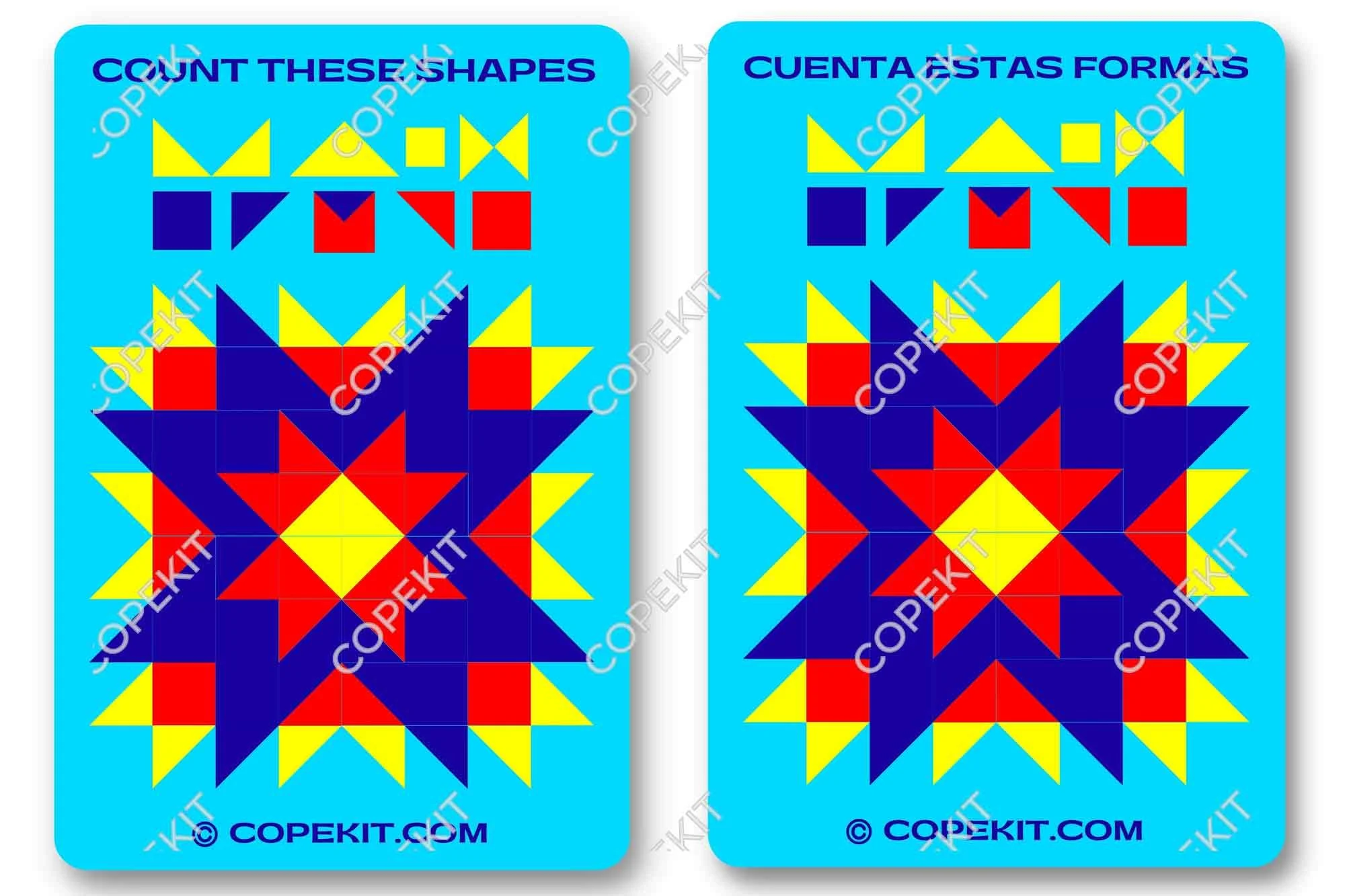How It Works
Counting two dimensional shapes requires both math and shape recognition skills:
sequential reasoning: following logic/ stated rules to solve a problem step-by-step
working memory: the ability to hold information in our minds while we manipulate it
visual processing: recognizing shape (one of the most important object properties)
visual attention: differentiating between color and shape of stimuli
Counting shapes to cope:
Stress and trauma disrupt our thinking and feelings. Complex thinking can become difficult. Engaging in familiar, rudimentary tasks such as counting and shape recognition , can “re-start” the brain (get us into our “thinking brain”) which helps to stabilize our mind and also calm our “feeling brain”
focuses our attention on a neutral cognitive activity, giving us space from the stress/trauma, allowing us to “re-set”
exercises memory retrieval and integration, which are disrupted by stress/trauma
use both right (math) and left (shapes) brain
brings us into the present moment, especially when we count things in our environment
How to Use
Count how many of the reference shapes (at the top of the card) appear in the design. Count inside your own head. Count out loud - use your voice. Go beyond the reference shapes to find other shapes in the design. Use reference shapes to create new shapes. Count objects of similar shape in your environment. Use color to differentiate objects of the same shape.
When to Use - Signs of Stress/Trauma
not talking, not answering questions
disconnected: staring blankly into space; immobilized - not moving
preoccupied, worried, overwhelmed
anxious, panicked, agitated
What It Can Do
decrease anxiety, distress; feel calmer
increase control over feelings (self-regulation)
think more clearly; increased concentration & problem solving
improve compliance: ability to hear and follow directions
connect to present environment when counting objects of similar shape
reconnect to self
increase interaction with people and environment
strengthen fluid reasoning: the ability to think flexibly to solve a problem
exercise shape recognition: shape is one of the most important object properties - identifying shape information is critical to successful interaction with our environment, as most objects are categorized by shape

